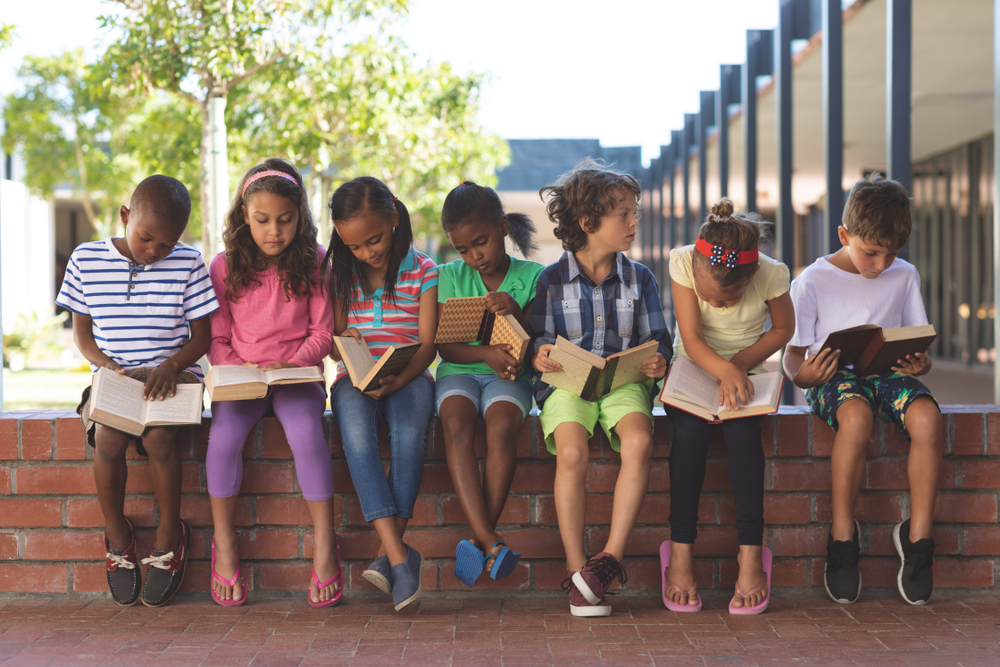Finding a Love of Reading in the Classroom

Have you ever had the feeling of being part of a good book? I don’t just mean have you ever read a good book, but have you ever felt like you were inside the story? Like you knew the characters as if they were your own, and you could not put it down because you had to find out what was going to happen? It is that feeling of excitement or escapism that keeps you hooked. As teachers, we want that for our students. However, that excitement and engagement with student-choice books seems to be missing in our educational curriculum today.
The question is, how do we support our students to build that love of reading in our classroom today? How do we help steer them into books that they will read for enjoyment, and form habits to become lifelong readers? There are many ways we can incorporate reading for fun in the classroom at any age! But it takes the work and determination of the classroom teacher to provide that opportunity. As teachers, we need to not only teach HOW to read but teach a LOVE for reading! That will make our students successful in the long run.
Let me start by saying that the ideas and tips listed below are not just for students. We, as teachers, need to find for ourselves the idea of reading for enjoyment if we want to make it feel important to our students. We need to model the behavior we want to see.
Build classroom reading routines.
The ideas of DEAR (Drop Everything And Read) and SSR (Sustained Silent Reading) are tried and true strategies meant to dedicate a small chunk of time for independent reading in the classroom. We don’t see the time for these strategies much in today’s classrooms, however, I believe it’s important to bring back the idea of independent reading time each and every day as it builds confidence, stamina, and excitement for reading. It provides dedicated time away from the digital distractions of today’s world. Think of a way you could make it fun and engaging for a short 10 or 20 minutes of your day! Use it as a transition activity in your classroom. It is important to model the reading yourself. Desks can be confining – if you love cozying up in a corner to read in a comfy spot, then allow your students to do the same! Let them choose somewhere in the classroom to sit and read. If you love reading outside on a beautiful day, take your class outside for 20 minutes of DEAR time with a book of their choice.
Engage with your students about what they read.
When independent reading is done, try not to focus on comprehension activities or filling out stock book reports – instead build the idea that this is a time for them to enjoy. If you want to practice writing, have them free-write in a journal to talk about what they read using opinion language. If you have the time, collect the journals and respond back! This will give you a greater understanding of your students, what they like/dislike, and further build that bond that is so important between teacher and student. As a bonus, it will also provide a way to show your gradebook that they are doing the work.
Provide student choice in books.
Allow students to choose books based on what interests them. As a Library Media Specialist, I have seen so many teachers send their students to the library only to let them choose books “on their level.” However, this focus on solely leveled reading hurts their excitement for reading, narrows their choices, and hinders their growth. I agree with the idea of the “Five Finger Rule” (putting up a finger for each word you do not know on a page to determine text difficulty) but I also feel strongly about the idea that children should choose books that interest them, and that can push them in their own way. Allow children to have more than one book at a time! Help them to choose one book for learning concepts of print, fluency, etc. while the other book is for pure enjoyment. In the younger grades, this might even look like just reviewing the pictures and coming up with a story of their own in their head – but that’s ok! We need to provide texts based on interest, with varied text features that students can learn from in unique ways.
Include reluctant readers and help parents give them the push they need outside of school.
In order to “hook” someone on a topic, they need to be interested. Some tips for reluctant readers are helping them to find books of interest. For example books on sports, fashion, or graphic novels (which, yes, are still books!)
A quick anecdote of me as a child – I was a very reluctant, struggling reader in elementary school. My Aunt (an educator) gave my mother the idea of allowing me to choose any magazine in the checkout line of the grocery store if I helped do the weekly shopping. I read those silly kid and teen magazines cover to cover each week, building my skills without knowing it. To this day, I still love to read magazines from the checkout line, but I also have a Master’s Degree in Reading! Thanks to my family, for putting in the effort to find something that would “hook” me.
As educators, we want to introduce our students to many different experiences with reading for pleasure, not just memorization, sounding out, or comprehension assignments. We need to put in the effort to build lifelong readers because they will be our successful leaders. Make time in the day for reading for FUN – you won’t regret it!
Kids Discover Kids Discover Online Love of Reading in the Classroom
